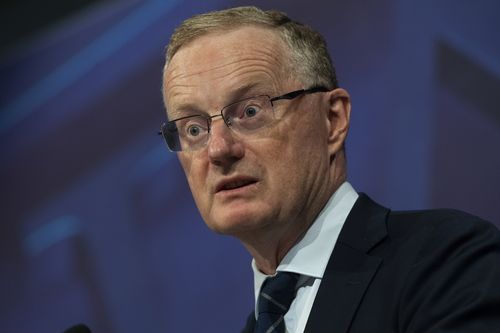
The Reserve Bank of Australia won’t hesitate to push through even bigger interest rate hikes if they’re needed to fight the “scourge of inflation”, its governor has foreshadowed.
“The board’s base case remains that interest rates will need to go higher still to bring inflation back to target and our forecasts have been prepared on that basis,” he told the RBA board dinner in Hobart last night.

“We are not on a pre-set path, though. If we need to step up to larger increases again to secure the return of inflation to target, we will do that. Similarly, if the situation requires us to hold steady for a while , we will do that.”
The comments were broadly similar to Lowe’s statement yesterday afternoon after attributed interest rates by 25 basis points to 2.85 per cent, the highest since April 2013.
But he went further in describing the board’s willingness to return to the major half-percentage-point hikes seen for four months earlier this year, while the RBA rapidly pushed the cash rate up from historic lows.
Lowe also stressed board members were conscious of the strain constant rate rises were putting on households already battling with high petrol prices and ballooning grocery bills.

“This morning, we also discussed the consequences of not raising interest rates, and allowing high inflation to persist and become entrenched in expectations,” he said.
“If this were to happen, the evil of inflation would be with us for longer and the eventual increase in interest rates needed to bring it down would be greater.
“This would increase the risk of a recession and a sharp rise in severe unemployment. It would be much better to avoid such a costly outcome and so we have acted strongly to avoid it.”
With rates now at more “normal” levels, Lowe said the board was currently happy to move more slowly as it waited to assess the rate rises’ lagging effects on the economy.
He repeatedly stressed the “narrow path” the bank was on to force inflation back down to 2-3 per cent while keeping the economy on an “even keel”.

Bondi Beach property sells for $1 million over reserve
Yesterday’s hike adds about $74 a month to the average Australian’s $500,000 mortgage, or $760 a month compared to the rate in May this year.
Million-dollar borrowers should be paying roughly $1500 more on their monthly repayments than before rates began rising.
The RBA expects inflation to peak at 8 per cent by the end of the year – higher than the Federal Budget forecast of 7.75 per cent.
The information provided on this website is general in nature only and does not constitute personal financial advice. The information has been prepared without taking into account your personal objectives, financial situation or needs. Before acting on any information on this website you should consider the appropriateness of the information having regard to your objectives, financial situation and needs.

Commentaires
Enregistrer un commentaire